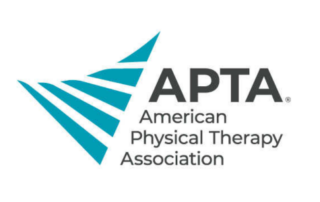The Alliance for Connected Care aims to:
Demonstrate the importance of Connected Care as a tool for improved quality and efficiency.
Build significant and high-level support for Connected Care among leaders in Congress and the Administration.
Enable more telehealth to support new models of care.
Lift geographic and site restrictions for telehealth in Medicare.
Establish a consensus-based, standardized definition of Connected Care to advance with policymakers.
Alliance News
Alliance Urges ONDCP to Work and Maintain Comprehensive Access to Telehealth
The Alliance for Connected Care submitted input on the Office of National Drug Control Policy’s 2026 National Drug Control Strategy. The Alliance emphasized the importance of maintaining comprehensive access to telehealth, because it is often an essential part of treatment for mental health conditions and substance use disorders and supports long-term recovery. The Alliance urged ONDCP to continue its work with the federal agencies, including the Drug Enforcement Administration, to ensure that all clinically appropriate options are on the table for the treatment and prevention of mental health conditions and substance use disorders. Specifically, access to non-narcotic mental health treatments via [...]
Alliance Calls on CMS to Modernize the Delivery of Health Care to Unlock Full Potential of Digital Health
The Alliance for Connected Care submitted comments to the Centers for Medicare & Medicaid Services (CMS), Assistant Secretary for Technology Policy/Office of the National Coordinator for Health Information Technology (ASTP/ONC), Department of Health and Human Services (HHS) Health Technology Ecosystem request for information. The Alliance believes that the delivery of health care should be seamless across modalities. The Alliance calls on CMS to leverage this Health Technology Ecosystem effort to - Ensure that patients and providers do not have to think about practice or payment barriers when considering the right modality for medical treatment. Modernize practice and payment requirements to [...]
WEBINAR: The Time Is Now: Modernizing Care Through Remote Monitoring – June 11
Since its coverage by Medicare during the first Trump Administration remote physiologic monitoring has shown growing adoption and strong clinical outcomes. Many primary care providers, cardiologists, and others utilize RPM for patients with chronic conditions like hypertension, diabetes, and heart disease, which are common and costly in the Medicare population. These services are turning the tide in reducing unnecessary and costly emergency department and hospitalization episodes. During this session, panelists discussed the latest data around remote physiologic monitoring outcomes, speak to current models for patient care, and discussed some of the latest issues around policy and reimbursement. Introductory remarks [...]
Alliance Urges IRS to Act on Telehealth in 2025-2026 Priority Guidance Plan
The Alliance urged the Internal Revenue Service (IRS) to include guidance on an expired pandemic-era policy that enabled employers to provide telehealth services on a pre-deductible basis to individuals with high-deductible health plans coupled with a health savings account (HDHP-HSA) in its 2025-2026 Priority Guidance Plan. As you may know, Section 3701 of the CARES Act created a temporary safe harbor that allowed employers and health plans to provide pre-deductible coverage of telehealth services for individuals with a high-deductible health plan coupled with a health savings account (HDHP-HSA) for the more than 32 million Americans. In December 2022, Congress extended [...]
Journal of Clinical Oncology: Comparing Trends in Telehealth Utilization by Medical Oncology Practices at Stanford Medicine and Mayo Clinic from 2019–2023
Journal of Clinical Oncology: Comparing Trends in Telehealth Utilization by Medical Oncology Practices at Stanford Medicine and Mayo Clinic from 2019–2023 This study found that both Stanford Cancer Center and the Mayo Clinic Comprehensive Cancer Center exhibited a similar trend in telemedicine adoption over time. Stanford Medicine and Mayo Clinic exhibited a pattern of initial growth of telemedicine adoption in 2020, followed by sustained utilization from 2021-2023. Researchers observed unique differences in the overall proportion, visit type deployment, and modality of telemedicine utilization between institutions. Findings suggest telemedicine visits have remained a fixture of medical oncology care for many [...]


















